Neon art, with its vibrant colors and glowing lights, has captivated audiences for decades with its striking visual appeal and innovative use of technology.
From iconic neon signs illuminating city streets to contemporary art installations pushing the boundaries of light and space, neon art continues to be a powerful medium for artists to express their creativity and engage viewers in new and exciting ways.
The history of neon art traces back to the early 20th century when neon lighting was first developed and commercialized.
The invention of neon tubes, which are filled with noble gases that emit a colorful glow when electrified, revolutionized the world of signage and advertising.
Neon signs quickly became synonymous with the bustling energy of urban landscapes, adorning storefronts, theaters, and restaurants with their bright and eye-catching displays.
In the 1960s and 1970s, artists began to experiment with neon as a medium for creating fine art pieces. Pioneers like Bruce Nauman and Keith Sonnier used neon tubing to form sculptures and installations that challenged traditional notions of art and engaged with concepts of light, space, and language. Since then, neon art has evolved into a diverse and dynamic field, encompassing a wide range of styles and approaches.
Exploring the Diversity of Neon Art
Contemporary neon artists draw inspiration from a variety of sources, blending traditional craftsmanship with modern technology to create artworks that are both visually stunning and conceptually rich.
Some artists, such as Tracey Emin and Jenny Holzer, use neon to convey personal messages and emotions, infusing their works with a sense of intimacy and vulnerability.
Others, like Stephen Antonakos and Jason Rhoades, explore the formal qualities of neon tubing, manipulating light and color to create immersive and immersive installations that transform the spaces they inhabit.
From minimalist geometric compositions to bold and expressive statements, neon art encompasses a wide spectrum of styles and approaches that reflect the diverse interests and perspectives of contemporary artists.
10 Famous Neon Artists And Their work
Bruce Nauman
An American artist known for his innovative use of neon to explore language and human experience.
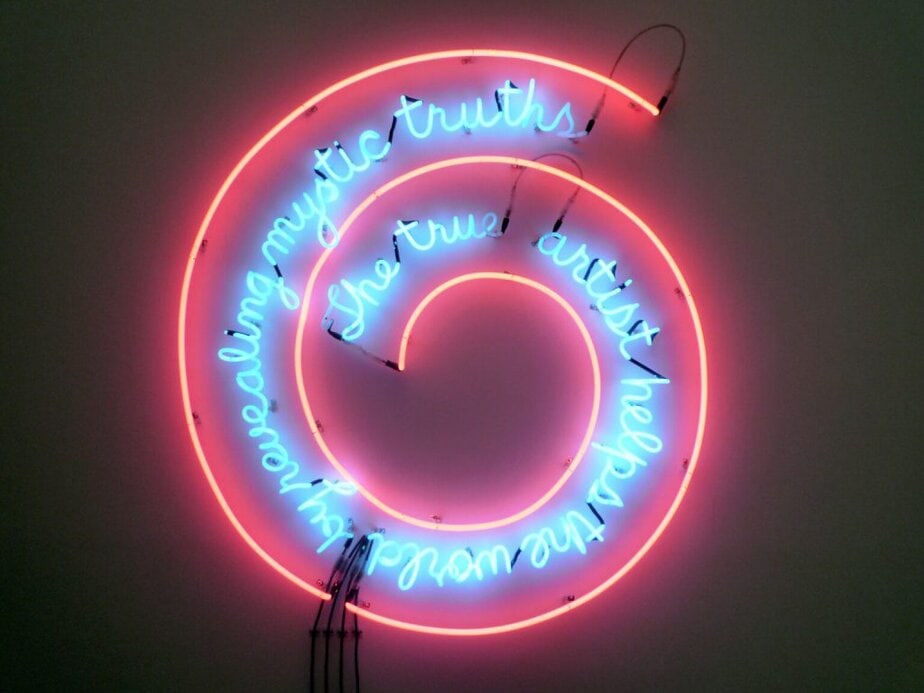
His piece “The True Artist Helps the World by Revealing Mystic Truths” (1967) exemplifies his approach, featuring spiraling neon text that challenges perceptions of art and meaning.
Tracey Emin
A British artist whose neon works are deeply personal, often displaying handwritten phrases that convey raw emotion. “I Listen To The Ocean And All I Hear Is You” (2018) is a poignant example, reflecting themes of love and longing.
Dan Flavin
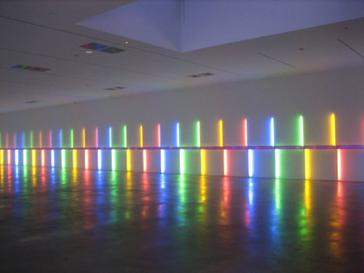
A minimalist artist celebrated for his fluorescent light installations. His untitled works, such as the series created in 1970, use commercial neon tubes arranged in geometric patterns, transforming spatial perception.
James Turrell
Known as the “sculptor of light,” Turrell utilizes neon and other light sources to create immersive environments.
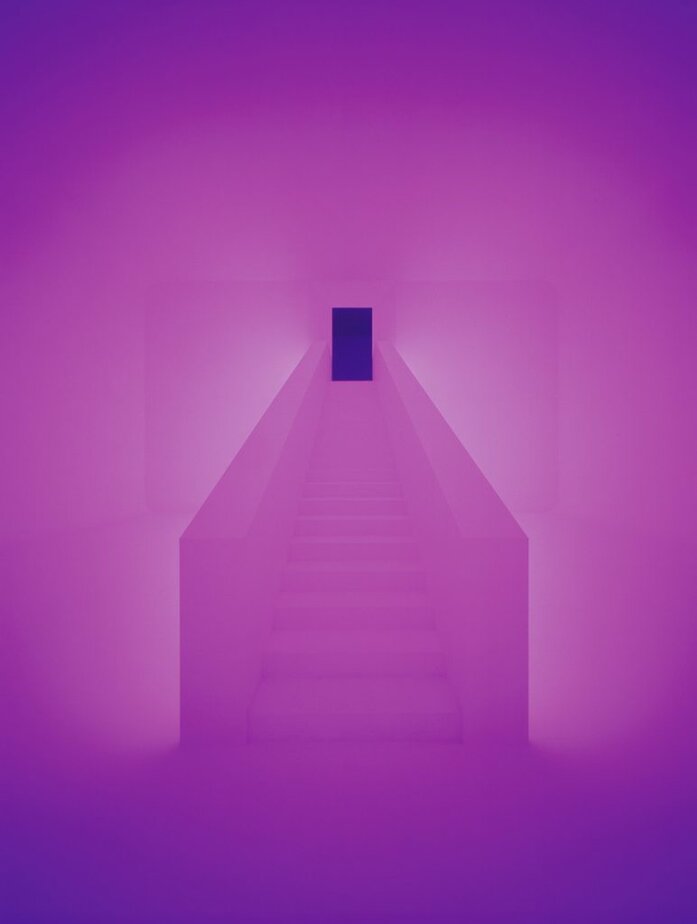 “The Light Inside” (1999), commissioned by the Museum of Fine Arts Houston, forms an all-encompassing luminous space that alters viewers’ sensory experiences.
“The Light Inside” (1999), commissioned by the Museum of Fine Arts Houston, forms an all-encompassing luminous space that alters viewers’ sensory experiences.
Glenn Ligon
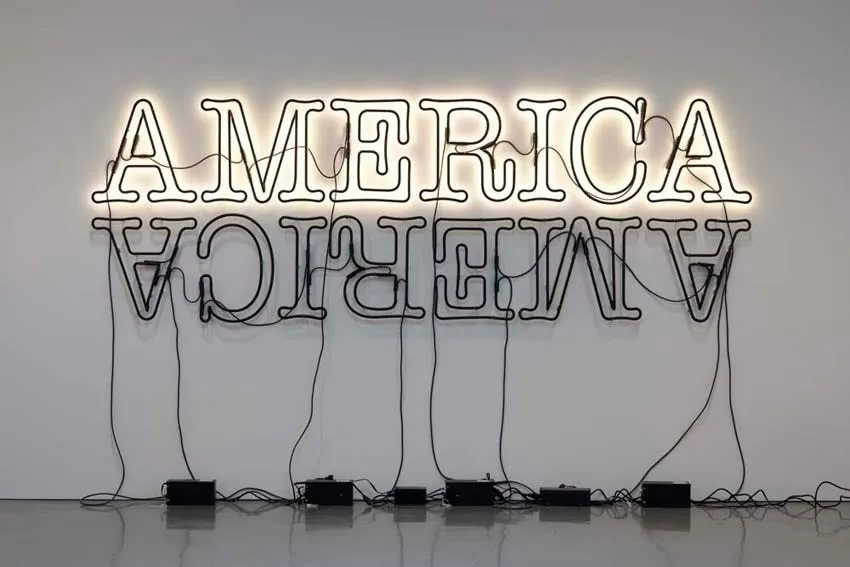
An American conceptual artist who incorporates neon to explore themes of race, identity, and language. His work “Warm Broad Glow” (2005) features the phrase “negro sunshine” in glowing neon, prompting reflection on cultural narratives.
Mary Weatherford
Inspired by urban landscapes, Weatherford integrates neon tubes into her abstract paintings.
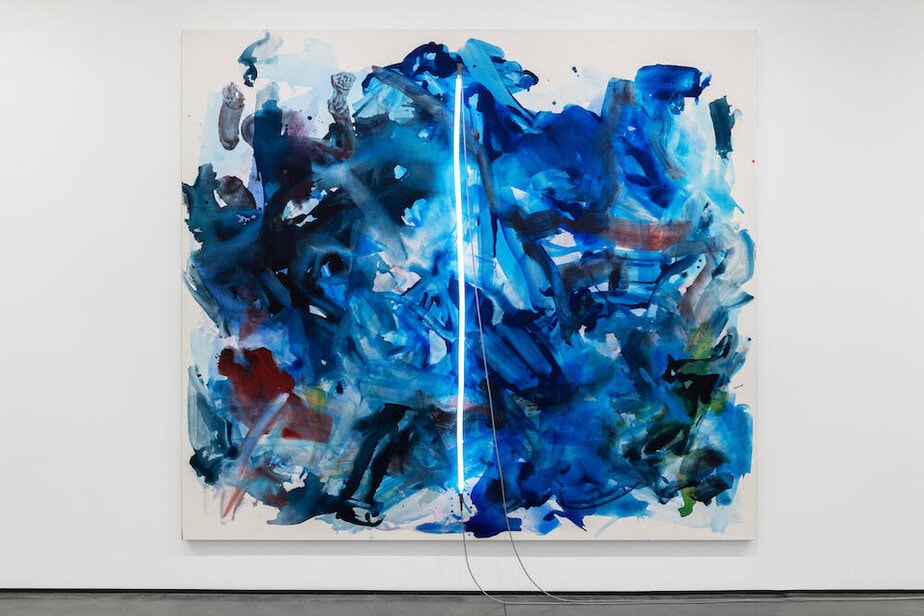
Works like “The Gate” (2018) juxtapose gestural brushstrokes with vibrant neon, creating dynamic visual contrasts.
Robert Montgomery
Known as the “Neon Poet,” Montgomery installs neon text pieces in public spaces, merging poetry with visual art.
 His work “Peace Poem” (2018) illuminates contemplative verses, inviting passersby to engage with art in everyday settings.
His work “Peace Poem” (2018) illuminates contemplative verses, inviting passersby to engage with art in everyday settings.
Martial Raysse
A French artist associated with the Pop Art movement, Raysse incorporates neon to critique consumer culture.
 “Nissa Bella” (1964) combines traditional portraiture with neon elements, highlighting the intersection of classic art and modern commercialism.
“Nissa Bella” (1964) combines traditional portraiture with neon elements, highlighting the intersection of classic art and modern commercialism.
Joseph Kosuth
A pioneer of conceptual art, Kosuth uses neon to explore the relationship between words and objects.
 His series “Art as Idea as Idea” presents definitions in neon, challenging viewers to reconsider the essence of language and meaning.
His series “Art as Idea as Idea” presents definitions in neon, challenging viewers to reconsider the essence of language and meaning.
A Chilean artist who uses neon to address themes of power and control.
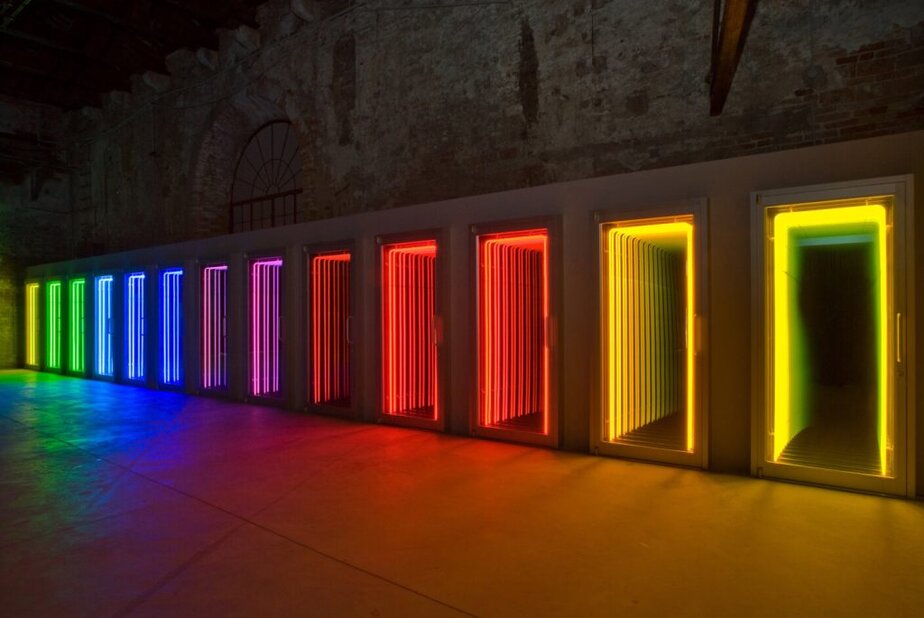 His work “Homeless Lamp, the Juice Sucker” (2004) features a shopping cart illuminated with neon, commenting on social issues and the human condition. These artists have each harnessed the unique properties of neon to create works that not only illuminate spaces but also provoke thought and evoke emotion
His work “Homeless Lamp, the Juice Sucker” (2004) features a shopping cart illuminated with neon, commenting on social issues and the human condition. These artists have each harnessed the unique properties of neon to create works that not only illuminate spaces but also provoke thought and evoke emotion
The Impact of Neon Art
Neon art continues to captivate audiences around the world with its luminous beauty and dynamic presence. Whether displayed in galleries, museums, or public spaces, neon artworks have a unique ability to engage viewers and create memorable experiences.
The glowing colors and ethereal quality of neon light evoke a sense of wonder and enchantment, inviting viewers to contemplate the interplay of light, color, and form.
Moreover, neon art has become a symbol of modernity and urban culture, with neon signs and installations serving as iconic landmarks in cities across the globe.
From the neon-lit streets of Tokyo to the neon-drenched alleys of Las Vegas, neon art has left an indelible mark on our collective imagination, embodying the spirit of innovation and creativity.
Looking to the Future
As technology continues to advance and artists push the boundaries of what is possible with neon lighting, the future of neon art looks bright and promising.
With new materials, techniques, and applications constantly being developed, neon artists are exploring exciting new avenues for creative expression and experimentation.
Modern Neon Wall Art: Stylish, Fun, and Functional
Looking to add some personality to your space? Neon wall art might just be your perfect match. It’s more than just eye-catching — it’s practical too!
✨ Why people love neon art:
-
It’s super durable and hard to break.
-
Comes in just about every bright color you can imagine.
-
Practically maintenance-free.
-
Energy-efficient and eco-friendly.
-
Fully customizable to suit your vibe.
Turn Heads with a Pop of Light
Neon wall art can totally transform a room. And with the market growing by 5.5% through 2030, it’s clear more and more people are catching on to this bright idea.
Design Tips to Shine Bright
Here’s how to make your neon really stand out:
-
🎨 Play with contrast: Neon looks amazing on dark or neutral walls.
-
📏 Pick the right size: Not too big, not too small — just right!
-
💡 Mix it up: Combine neon with other light sources for a layered look.
-
🧭 Define spaces: Great for marking off cozy corners in open layouts.
-
🌟 Double the value: It’s art and lighting — a win-win.
Colors That Set the Mood
-
💙 Cool tones (like blue or purple) = calm, chill vibes.
-
❤️ Warm tones (think red, orange, pink) = lively and energetic.
Where to Place Your Neon Art
Here are a few fun spots to show off your glow:
-
💻 Behind your desk — perfect for video calls.
-
🛏️ Above your bed — creates a bold, dreamy statement.
-
🍳 In the kitchen — adds a cool, retro twist.
-
🖼️ In a gallery wall — becomes the star of the show.
-
🎮 In the entertainment room — instant wow factor.
Why Neon Just Works
Neon art is super versatile. Want to switch things up? You can move it, redesign it, or even change the colors to match your mood or the season. That’s what makes it such a modern design fave.
Hot Neon Trends for 2025
Here’s what’s lighting up the design world:
-
Bold, simple phrases that make a statement.
-
Nature-themed designs — a little outdoors, indoors.
-
Interactive pieces that respond to sound or movement.
-
Cool material mashups — neon with wood, metal, or glass.
-
Eye-catching geometric patterns that steal the spotlight.
Whether you’re looking to refresh a room or just want a touch of glow, neon wall art brings both style and personality. Ready to light things up?
The article contains sponsored affiliate links from Amazon to valuable resources.


